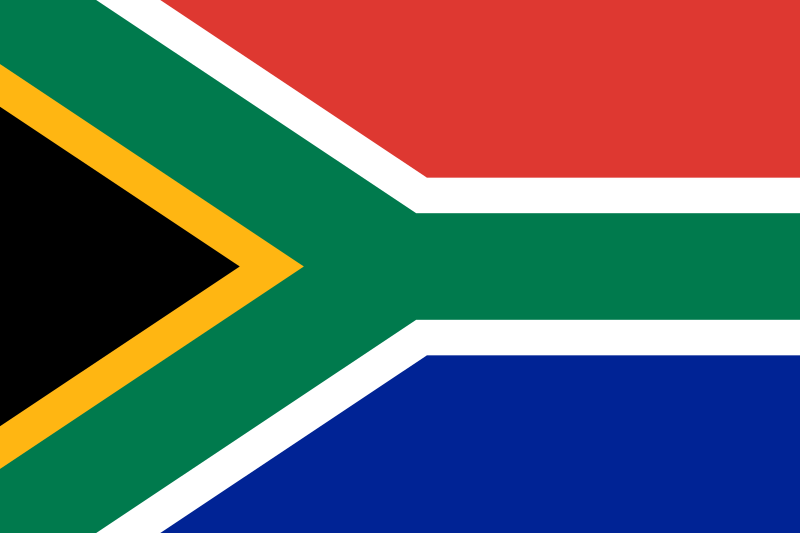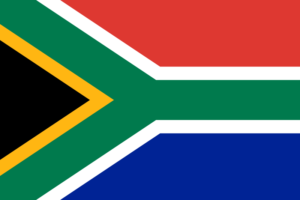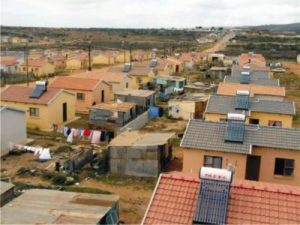South Africa: Rollout Delay Due to “70 % local production”
November 19, 2013
Five years ago, the South African government launched its National Solar Water Heating Programme (NSWHP), aiming to install one million domestic Solar Water Heating (SWH) systems by 2014. Relief needed to come soon to South Africa´s overburdened power grid, which is why state-owned electricity provider Eskom implemented the NSWHP in form of a grant scheme. According to a presentation from 28 August 2013 by Mokgadi Modise, Chief Director of Clean Energy at the Department of Energy (DoE), the programme had led to the installation of 375,650 solar water heaters until 9 August 2013. The pie chart shows the distribution of subsidised solar systems across the South African provinces. The government had recently allocated an additional South African Rand (ZAR) 4.7 billion (ca. EUR 337 million) to speed up SWH installation, as mentioned in the presentation (see the attached document).
In the meantime, March 2015 has been declared the new target date for achieving one million installed solar thermal energy systems. An additional four million solar thermal energy plants are scheduled for installation until 2030. But to reach the March 2015 aim, installers would have to set up an average of 35,000 solar water heaters per month over the next 17 months. Many observers think this is impossible, as the last seven months have only shown an average of 8,000 units and the results of the last Eskom tender in May 2013 have not been announced yet. Instead, the Department of Energy (DoE) issued a so-called Request for Registration and Information (RFRI) to local solar water heating manufactures in mid-August 2013. The answer by Johannes Mokobane, Press Officer at the DoE Media Desk, as to why these results had also not been made public yet, was rather short on words. “The outcomes of the SWH tender and the RFRI will be publicised once feedback has been given to the tenderers. This feedback process is currently underway,” he declared in the beginning of November 2013.
Last year, South Africa´s municipalities were already asked to reply to a Request for Information (RFI), with which the DoE aimed to establish a database of communities ready to participate in the SWH programme. The following RFRI for manufacturers in August seems to have supplemented this RFI, and it has been a direct consequence of an instruction note which the Minister for the Department of Trade and Industry issued in the beginning of August 2013. According to the note, 70% of the solar water heating systems have to be of local production complying with the Preferential Procurement Policy Framework Act (PPPFA). The DoE’s RFRI aimed to collect information on establishing a PPPFA-compliant group of SWH manufacturers, both for high- and low-pressure solar heating systems. Companies failing to deliver the requested information would no longer be eligible for participation in upcoming Eskom procurement tenders. But until now, the DoE has not published the promised RFRI list of manufacturers able to produce 70% local SWH systems with tanks, collectors and installation kits.
“Tenderers have been advised to be patient,” Trevor van der Vyver from Maxlite says, adding that a non-validity of the tender documents was quickly communicated, “but that is where communication ends”. “There were some initial problems with the department’s solar water heating programme,” Ompie Aphane, Deputy Director General Policy at the DoE, admitted at the end of October and spoke about difficulties surrounding the local content of the solar geysers and the quality of the workmanship. A new contracting model between the DoE, Eskom and the suppliers should bring the programme back on track, he promised.
While there are still no clear answers from the DoE about the reasons for the delay, a Question & Answer Form to the RFRI from August, published and answered by the DoE on 4 September, brought to light some interesting statements by unnamed SWH producers (see the attached pdf). Some of them expressed their concern that there were no locally manufactured low-pressure evacuated tubes in South Africa and therefore, the designated sector requirements could not be fulfilled. The anonymous sources fear that the request for locally produced evacuated tubes could destroy more jobs in the manufacturing of tanks and other components than they could create by evacuated tubes or flat plate collector manufacturing.
The industry was “already on its knees, due to constant uncertainty, changing conditions,” an unnamed manufacturer complained and asked whether the intent was “to destroy thousands of jobs in manufacturing, installation and maintenance, as well as [to destroy] the domestic end of the renewable energy sector?” “The intention is to increase the local content of subsidised systems. We disagree that this approach will destroy jobs; rather it will create far more jobs than is currently the case,” was the somehow optimistic answer of the DoE.
South African Department of Energy: http://www.energy.gov.za
Eskom: http://www.eskom.co.za
Maxlite: http://www.maxlite.co.za


